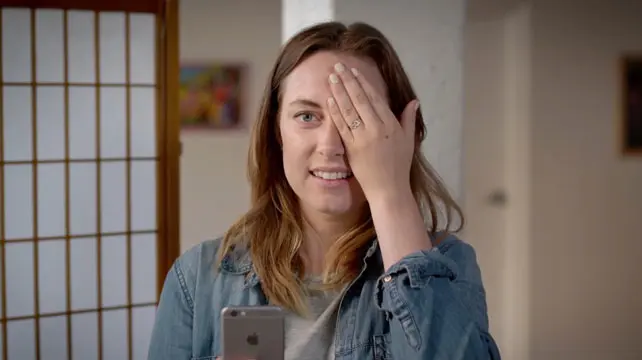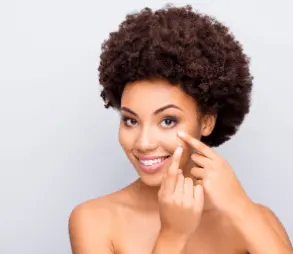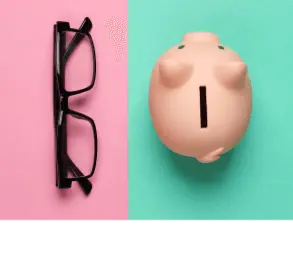Sports Eye Safety 101: Protecting & Preventing Against Injury

Each year, sports cause more than 40 thousand eye injuries in the United States. According to eye care professionals, most of these injuries can be prevented.
The Most Dangerous Sports For Eye Safety
Every year, over 25 thousand people sustain sports-related eye injuries. In one study on kids sports injuries, basketball was the leading sport that caused the majority of visits to the emergency room. When looking at all age groups together, water sports and activities were named the leading cause of eye injuries and considered the most dangerous when it came to eye safety.
So, how do most dangerous sports stack up? Check out the list of sports that caused the most visits to the emergency room, as researched by Prevent Blindness, the nation’s leading volunteer eye health and safety organization.
Top 10 Sports That Caused Eye Injuries- Water and Pool Play: 6,605
- Basketball: 5,141
- BB Guns, Paintball Guns, Darts and Arrows: 2,798
- Baseball and Softball: 2,488
- Weight Training and Health Club Exercise: 2,253
- Bicycling: 1,864
- Football: 1,448
- Unspecified activities: 1,445
- Soccer: 1,390
- Playground: 1,180
(Source: “Sports-Related Eye Injuries by Age-2017.” Figures for injuries are estimates and reflect all ages.)
If you’re playing any kind of sport, an eye injury is a real possibility. To protect your vision, eye health professionals recommend that you always wear protective eyewear, no matter what sport you play.
The Most Common Eye Injuries In Sports
Most sports involve physical contact either with another athlete or with an object, such as a ball or a puck. The more contact is involved, the higher the risk for injuries. When an athlete doesn’t wear protective eyewear, eye injuries are more likely to happen.
In water sports, it can be a blow to your eye with an elbow. In basketball, it can be a poke in the eye with a finger. In hockey, it can be a stick that slid under your face mask and made contact with your eye. These are just some examples of common eye injuries in sports.
The Most Common Mechanisms of Sports Eye Trauma
-
Blunt Eye Trauma
Sports injury is one of the common causes of blunt trauma to the eye. Vice versa, blunt trauma causes most sports-related eye injuries. A blunt eye trauma happens when you get hit in the eye. This type of trauma may lead to damage of the internal structures of your eye and can result in dangerous eye conditions, like glaucoma, hyphema (bleeding within the eye), retinal tears or detachments, and even a ruptured globe. The globe of the eye is the eyeball apart from its appendages.
-
Penetrating Injuries
Penetrating eye injuries may lead to severe vision loss or loss of the eye. It occurs when a foreign object cuts into the eye. This is not a common sports-related injury. However, it can happen if you wear your glasses during an activity and they get broken and cut your eye, or if a finger scratches you in the eye.
-
Radiation Injury
Radiation injury is caused by the ultraviolet light from the sun. This is a common injury for water sports and winter sports, like water skiing and snow skiing. Protective eyewear with UV-blocking technology helps preventing eye injuries from radiation.
Top 5 Sports Eye Injuries
What are the most popular eye injuries caused by sports?
-
Corneal abrasion
Corneal abrasion can happen in any sport. This is the least serious of all sports-related eye injuries. Corneal abrasion occurs when the front of your eye, the cornea, sustains a superficial scratch by dust, dirt, sand, or other foreign objects. In places where soccer is played frequently, one third of sports-related eye injuries are caused by a soccer ball.
-
Traumatic Iritis
Traumatic iritis is a painful inflammation of the iris caused by a blunt trauma to the eye or orbit. Your eye may also tear up or turn red. Iritis can develop within three days after the trauma
-
Hyphema
Hyphema is one of the most common sports-related eye injuries. Hyphema is painful bleeding in your eye, between the cornea and iris. It usually occurs after a blunt trauma to the eye and may lead to permanent vision problems. Most hyphema injuries in sports are caused by racquet sports, baseball, and softball.
-
Angle recession
Angle recession usually occurs after a blunt eye trauma, and it is also highly associated with hyphema. Angle recession results from separation of the ciliary muscle fibers. The ciliary muscle is important for two eye functions: it helps with the eye lens focusing on varying distances, and it helps to control the aqueous humor flow in the eye. Athletes with angle recession are at high risk of developing glaucoma caused by problems with aqueous humor outflow and an increase in intraocular pressure. Traumatic glaucoma can happen soon after the eye injury or many years later
-
Retinal tear or retinal detachment
While most retinal tears occur naturally, due to aging, traumatic retinal breaks happen as a result of blunt force trauma to the globe of the eye. When tears form in the retina, they create a risk of retinal detachment and severe vision loss. Traumatic retinal tears are much more likely to lead to detachment and have a greater potential for subsequent vision loss. Some examples of traumatic retinal tears in sports include deliberate eye gouging in rugby, being struck in the eye with a soccer ball, being struck in the eye with a squash ball, and being poked in the eye with a finger in basketball.
Seek immediate medical attention with any type of sports eye injury, as any of them may permanently affect your eye health or threaten your vision. An injured athlete may return to the sport only after being examined and cleared by a doctor.
How To Protect Your Eyes In Sports
According to ophthalmologists, 90% of sports eye injuries are preventable by wearing proper eyewear. Learn what provides enough protection for your eyes and what doesn’t.
- Regular eyeglasses do not provide adequate eye protection and can make an eye injury worse if they shatter.
- Contact lenses don’t protect your eyes.
- Polycarbonate lenses are up to 10 times stronger than plastic or glass lenses, and they provide adequate protection from UV-rays.
- Always wear the right kind of eye protection for each sport activity
How can you help? Parents, teachers, school nurses, and coaches can help bring more awareness and help reduce the number and severity of eye injuries by supporting sports eye safety in the community.
Related Articles: Save yourself from getting into rush hours and buy your contacts online.
Save yourself from getting into rush hours and buy your contacts online.







